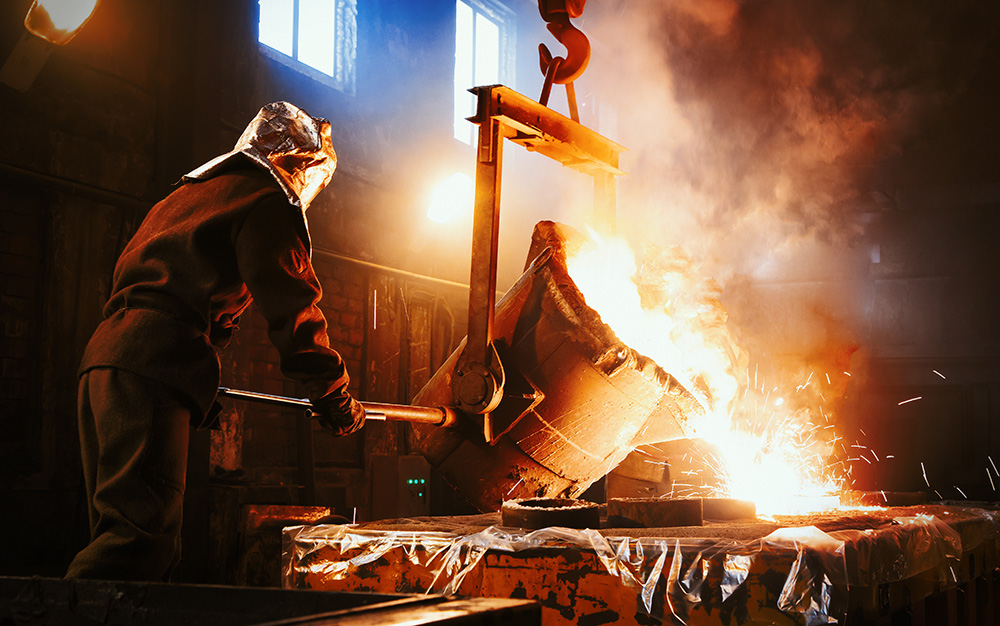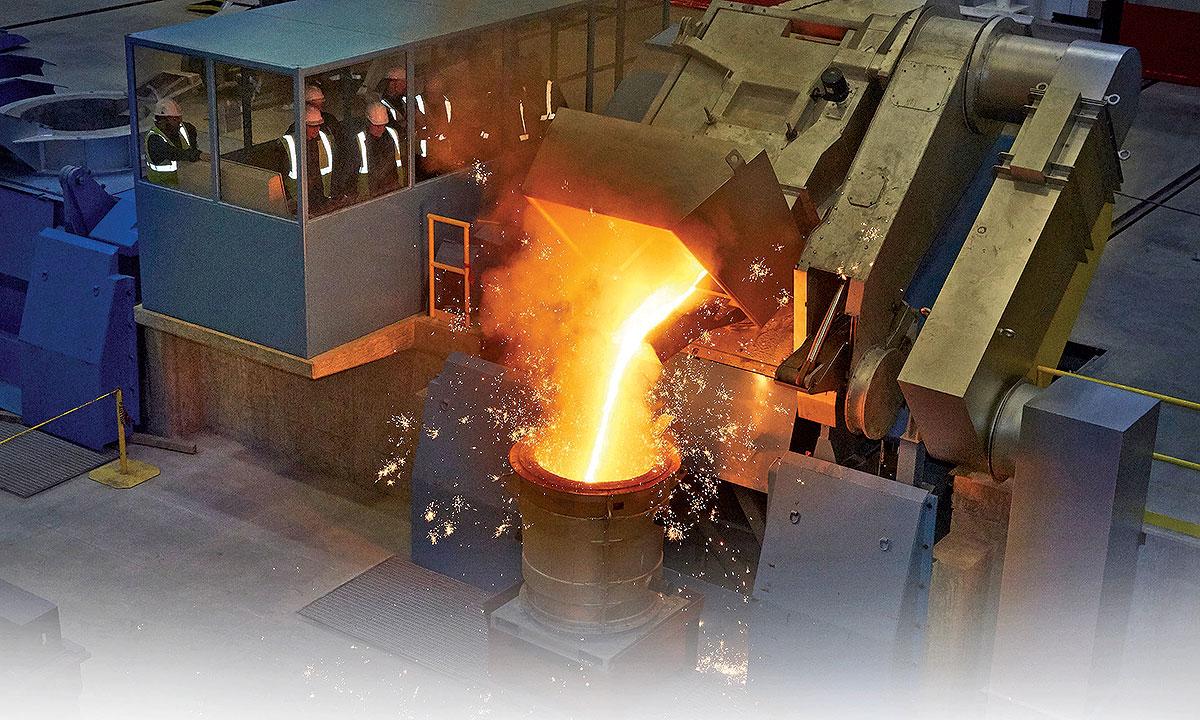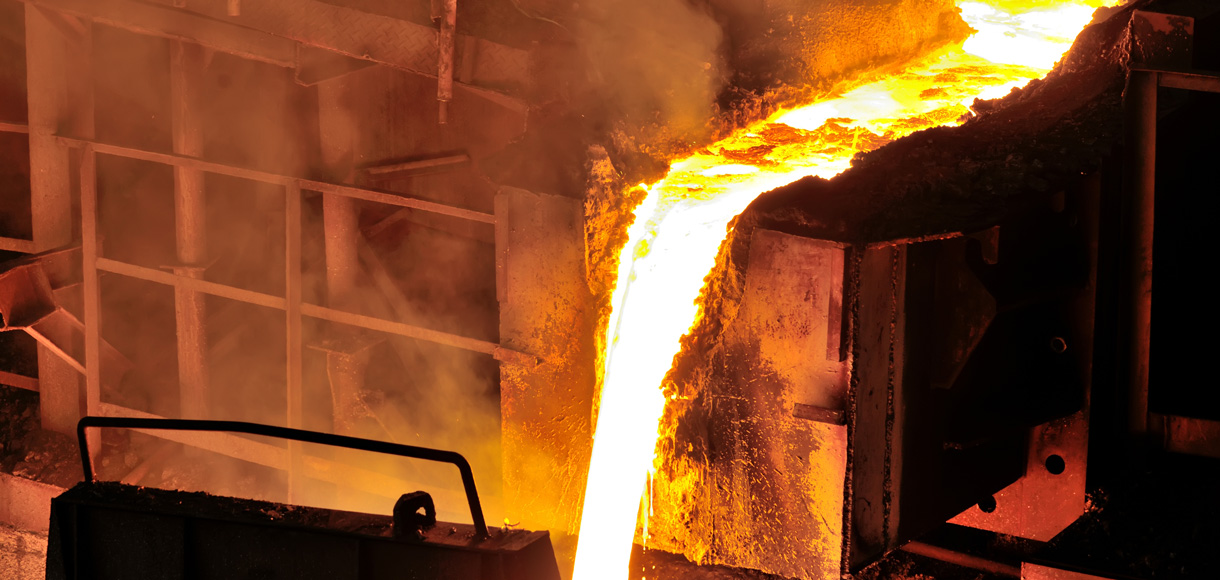How an Aluminum Foundry produces high-grade finished components
Wiki Article
Discover the Cutting-edge Techniques Made Use Of in a Metal Foundry for Superior Casting Results
In today's competitive production landscape, metal foundries are significantly embracing innovative methods to boost spreading outcomes - Aluminum Foundry. Advanced computer system simulations permit for precise modeling of liquified metal behavior, while 3D printing allows fast manufacturing of complicated mold and mildews. In addition, green products and automation streamline operations. These growths guarantee considerable renovations in efficiency and high quality control. However, the effect of these modern technologies on sustainability and production techniques continues to be to be fully checked outAdvanced Computer System Simulations in Metal Casting
Advanced computer system simulations have actually revolutionized the metal casting procedure by enhancing accuracy and effectiveness. These advanced tools enable engineers to create digital designs of cast elements, enabling them to examine and anticipate the behavior of liquified metal throughout the casting phase. By mimicing various parameters such as temperature level, flow price, and cooling prices, suppliers can recognize prospective problems before physical manufacturing starts.This positive method reduces waste and decreases pricey errors, ultimately resulting in improved item high quality. Additionally, simulations promote the optimization of mold styles, ensuring that they satisfy the particular needs of each job. The combination of computational fluid characteristics (CFD) and finite component evaluation (FEA) further adds to the precision of these simulations, supplying insights that were formerly unattainable. As a result, progressed computer simulations have actually become an essential component of modern-day metal foundries, substantially progressing the industry's capabilities.
3D Printing for Molds and Patterns
3D printing has emerged as a groundbreaking strategy for producing mold and mildews and patterns in the metal foundry industry. This technology makes it possible for the rapid manufacturing of complex geometries that standard manufacturing techniques have a hard time to attain. By utilizing additive production, foundries can produce elaborate designs with minimized preparations and material waste. The capacity to produce molds as needed permits higher flexibility in design versions, helping with faster prototyping and modifications.Furthermore, 3D printing can make use of a selection of materials, including plastics and metals, customized to specific casting demands. This flexibility improves the accuracy of mold and mildews, causing exceptional casting outcomes with enhanced surface area coatings. Furthermore, the decrease in the number of parts needed streamlines setting up processes, additionally enhancing manufacturing effectiveness. As foundries remain to take on 3D printing, they are positioned to redefine sector standards, leading the way for innovation and boosted productivity in metal spreading operations.
Eco-Friendly Materials and Processes
As the metal foundry sector faces increasing pressure to minimize its environmental impact, the fostering of environmentally friendly products and processes has come to be necessary. Shops are now exploring lasting options to conventional materials, such as using recycled metals and bio-based binders. These products not only decrease waste however additionally lower power usage throughout production.In addition, innovations in sand casting techniques have brought about using synthetic sands that are much less dangerous to the atmosphere. Foundries are likewise implementing innovative procedures like molten metal treatment that lowers discharges and enhances the top quality of actors items.
Furthermore, water-based coverings have actually replaced poisonous solvents, promoting a much safer workplace (Metal Casting). By incorporating these environmentally friendly practices, metal foundries can significantly reduce their eco-friendly impact while keeping top quality casting results. This shift not just profits the environment however also straightens with the growing consumer need for lasting manufacturing options
Automation and Robotics in Foundry Procedures
While the metal foundry market accepts technology, the integration of automation and robotics is transforming operations substantially. Automated try this web-site systems simplify processes such as mold and mildew making, metal pouring, and casting finishing, significantly improving effectiveness. Robotics assist in the handling of heavy products, decreasing the threat of office injuries and making sure safer settings.
Further, making use of automated assisted cars (AGVs) optimizes product transportation within centers, guaranteeing timely distribution of components to proper workstations. By applying these technologies, foundries can adapt to fluctuating needs with higher dexterity, eventually resulting in boosted productivity and competition on the market. As automation and robotics continue to progress, they hold the potential to redefine typical foundry methods and drive further innovations in casting methods.
Real-Time Monitoring and Quality Assurance Techniques
The developments in automation and robotics have actually led the way for more innovative methods to top quality guarantee in metal foundries. Real-time monitoring systems make use of advanced sensing units and information analytics to track vital criteria throughout the casting process. These systems continuously analyze variables such as temperature, pressure, and material make-up, making it possible for prompt discovery of deviations from established standards.Quality control techniques currently integrate artificial intelligence More Help formulas that assess historical data to forecast possible problems before they happen. This aggressive strategy decreases waste and boosts total production effectiveness. Additionally, integrated feedback loops enable quick adjustments, ensuring that each casting satisfies rigid top quality demands.
The implementation of digital twins-- online replicas of physical assets-- has also transformed quality control, permitting designers to imitate and maximize procedures in real-time. With each other, these innovative strategies substantially boost the dependability and high quality of castings, establishing new industry criteria in metal foundry procedures.
Often Asked Questions
What Sorts of Metals Are Generally Cast in Shops?
Commonly cast metals in foundries consist of light weight aluminum, bronze, iron, and brass. Each metal displays unique residential or commercial properties, making them suitable for different applications, such as automobile parts, machinery, and artistic sculptures, improving their flexibility in production.
For how long Does the Casting Process Usually Take?
The spreading procedure normally look at more info takes several hours to days, relying on factors such as the complexity of the mold, kind of metal made use of, and air conditioning needs. Each phase affects the total duration markedly.What Precaution Are in Place for Foundry Workers?

Exactly how Are Defects in Castings Identified and Addressed?
Flaws in spreadings are determined via visual inspections and non-destructive screening approaches. As soon as found, foundry employees resolve them by improving processes, adjusting material compositions, and implementing corrective actions to assure high quality and compliance with criteria.What Is the Expense Range for Metal Casting Providers?
The expense variety for metal spreading services typically ranges $1 to $10 per pound, depending on variables such as material type, complexity of the style, and manufacturing volume, influencing overall prices considerably.In today's competitive manufacturing landscape, metal foundries are progressively taking on innovative strategies to improve casting results. As the metal foundry industry faces enhancing stress to decrease its ecological footprint, the fostering of green products and processes has come to be important. Factories are now discovering lasting options to conventional products, such as making use of recycled metals and bio-based binders. By incorporating these green methods, metal foundries can considerably lower their ecological effect while keeping premium spreading results. The developments in automation and robotics have actually paved the method for extra sophisticated methods to quality guarantee in metal foundries.
Report this wiki page